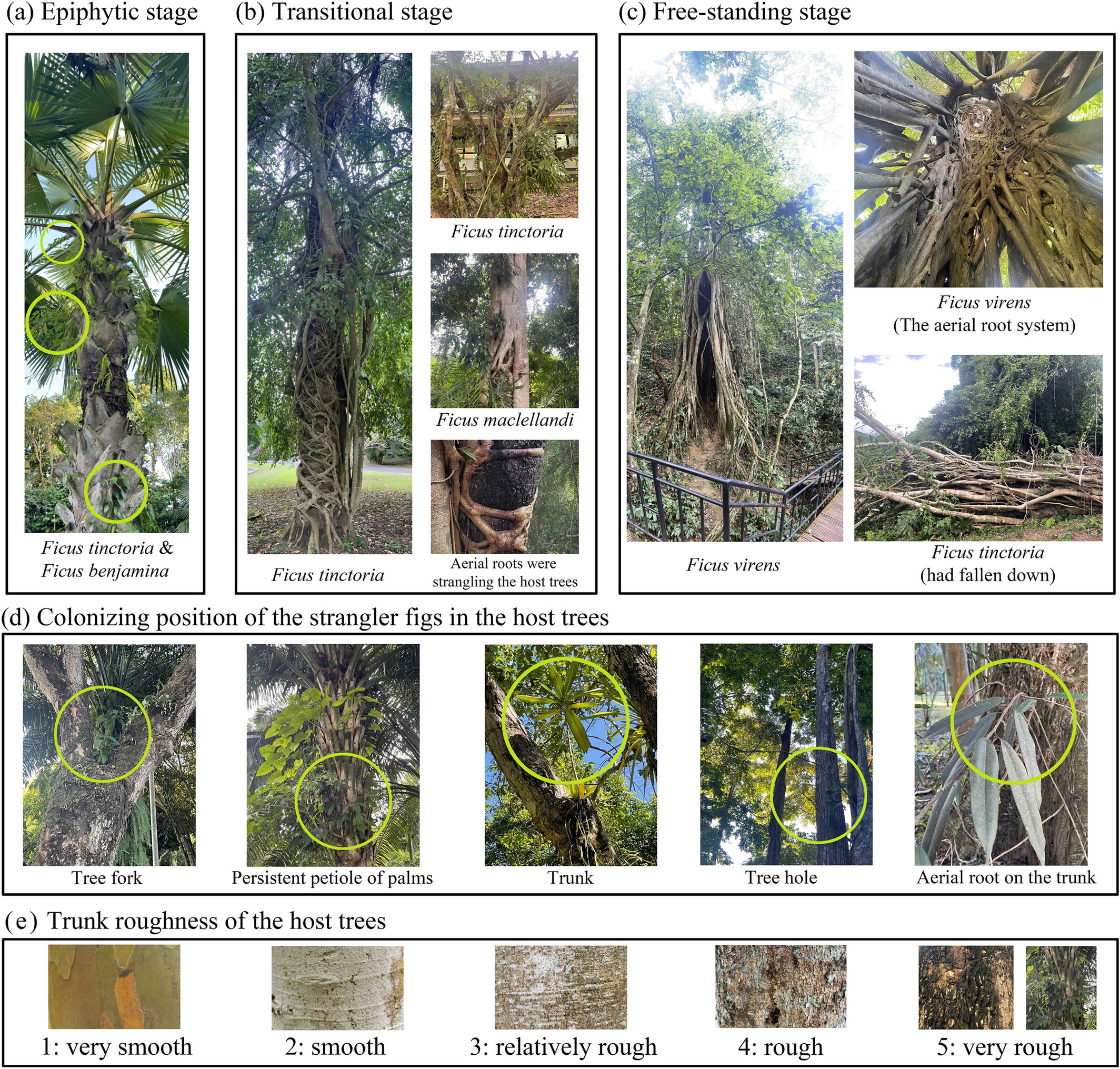
The strangler fig, as a hemi-epiphyte, is renowned for its unique "strangling" behavior. Its colonization and establishment on some trees in tropical urban green spaces form a distinctive ecological landscape, enriching the ecological functions of cities in tropical regions.
Understanding ecological associations between strangler figs and their host trees can improve green space management in tropical urban ecosystems.
In a recent study, researchers from Xishuangbanna Tropical Botanical Garden (XTBG) investigated the diversity and characteristics of strangler figs and their host trees in a large tropical botanical garden as a proxy for understanding the associations of strangler figs in urban green spaces.
They conducted a survey of over 9,000 trees with a diameter at breast height (DBH) of more than 3 centimeters (cm) across 10 transects in the garden.
Researchers analyzed the diversity, characteristics, and network relationships of strangler figs and their host trees, and explored the impact of different management measures and simulated removal scenarios on the survival status of strangler figs and the strangler fig-host network.
They found 13 strangler fig species (319 individuals) widely colonized 67 host species. Among them, palm hosts accounted for 52% of all host individuals. The strangler figs had a higher colonization rate on large trees with suitable microhabitats (such as remnant palm petioles and primary branches). The establishment of strangler figs would deteriorate the nutrient status of the host.
After strangler figs' aerial roots had entered the ground, leaf nitrogen and phosphorus content of hosts decreased significantly.
The researchers further found that the network relationship between strangler figs and hosts was characterized by high specificity and low nestedness. Under simulated scenarios, prioritizing the removal of large DBH hosts and palm hosts with strangler figs can simplify the structure of the strangler fig-host network.
Concerning strangler fig management, the researchers suggested that planting smaller diameter trees with smooth bark and native tree species can reduce the colonization of strangler figs. Cutting off the aerial roots of strangler figs can effectively prevent their establishment, according to the researchers.
"The epiphytic stage is the best time for strangler fig management," said Professor SONG Liang, one of the corresponding authors of the study, and also a researcher from XTBG.
The work was funded by the National Natural Science Foundation of China, the Biodiversity Conservation Strategy Program of Chinese Academy of Sciences.
Related results were published in Plants People Planet.

The colonization and establishment of strangler figs and characteristics of the host trees. (Image by MO Yuxuan)

86-10-68597521 (day)
86-10-68597289 (night)

52 Sanlihe Rd., Xicheng District,
Beijing, China (100864)

